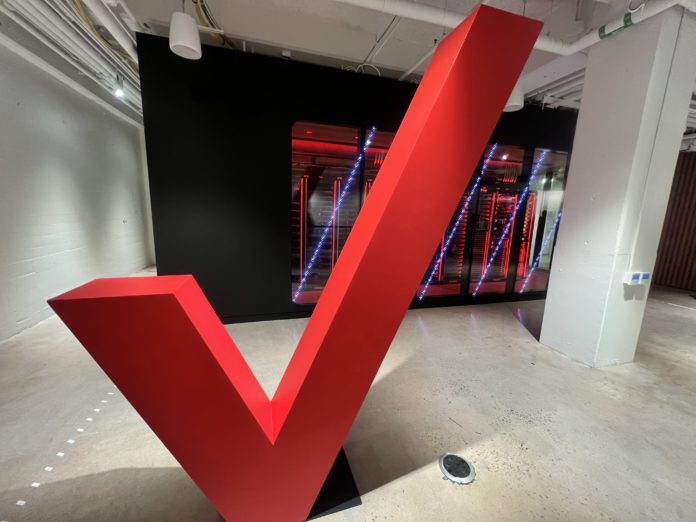Executives cut the ribbon this week on the newest Verizon Innovation Lab in San Francisco
SAN FRANCISCO—A transition from the “art of the possible to…the art of the practical.” That was the theme communicated by Verizon SVP and CTO Ed Chan at the opening of the operator’s newest innovation lab in San Francisco. With an increasingly mature 5G network, “We needed to also transition our innovation labs into a place where we can actually practice these things now,” he said.
In terms of what is possible via a combination of 5G, both public and private, and mobile edge computing (MEC) infrastructure, lab staff took media, analysts and other partners and guests through demos running the gamut from drone-based RF sensing/precise positioning for aerospace and defense applications and real-time coach-to-coach communications used on NFL sidelines to immersive XR for entertainment and education and a computer vision system deployed to assist Verizon’s own logistics workers.
In the context of 5G monetization, the point seemed to be that early and hyped 5G use cases—remember remote surgery?—have given way to a more focused approach to clear cut applications with immediate and obvious business value that are also capable of scaling across Verizon’s network and into a number of vertical industries.
Another quick word on 5G monetization: Outgoing Verizon CFO Matt Ellis, speaking earlier this year at a Morgan Stanley conference, acknowledged that private networks and MEC, identified by the company as growth drivers, were “going to take a little longer than we’d like…But in terms of the scale of the opportunity, still very much believe there is something significant there…For me, the question is more of when, not if. It’s absolutely going to be there.”
To that point, last month Verizon announced a $2 billion, 15-year deal with the U.S. Federal Aviation Administration to design, build, operate and maintain a private network to support mission critical FAA applications like air traffic management across the country’s 29 million square mile National Airspace System.
Another example, referenced above, is a five-year deal with the NFL to provide private networks that support coach-to-coach communications; to note, this is an LTE-based solution. But back to the point of tangible solutions with broad applicability, having what effectively amounts to real-time comms in chaotic environments like the sidelines of a pro football game would seemingly be useful in all sorts of loud settings where communication is paramount—think construction, mining, manufacturing, all sorts of heavy industrial environments really.
Also on hand for the opening was Lockheed Martin’s Vice President Dan Rice. Lockheed and Verizon have collaborated on a U.S. Department of Defense project wherein drones connected to a private 5G network use RF detection technologies to capture, transmit and analyze radio propagation models. Changes in the RF environment are processed by a MEC node to detect and track RF-emitting objects. The DoD would use this for intelligence, surveillance and reconnaissance (ISR). RF sensing and precise positioning are technologies pioneered by Qualcomm and, like the coach-to-coach comms example, are applicable elsewhere like in a logistics facility where autonomous guided vehicles are whizzing around for example.
“What it allows us to do,” Rice said, “is to geolocate moving RF emitters.” Speaking more broadly of Lockheed’s work with Verizon, Rice said an overarching goal is driving interoperability of existing and emerging military data links with 5G to move info around on hybrid networks. “We’re working on things like how do you seamlessly transition a single user device to public networks to private networks and back again seamlessly.”

